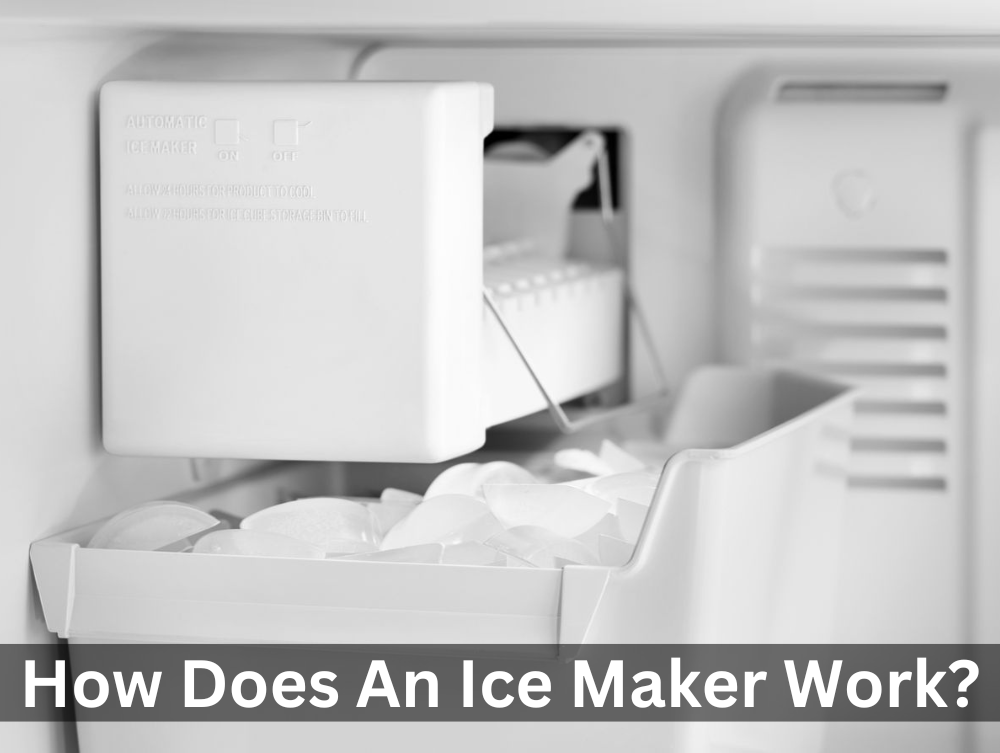Ice makers are one of the underrated essentials of the modern kitchen. Have you ever wondered how does an ice maker works?
An ice maker is a device that produces ice cubes or crushed ice automatically. It starts by filling an ice mold with water, which is then frozen by a cooling system. Once the ice is solid, an ejector arm or mechanism releases the cubes from the mold. A brief heating element may assist in this process. The ejected ice cubes are collected in a bin or dispenser. Modern ice makers include sensors and controls to monitor ice levels and ensure efficient operation. Some models offer size options and crushed ice. Overall, an ice maker simplifies ice production, providing a constant supply of ice for various uses if the ice machine services done at regular time.
Today, let’s discuss how different types of ice makers work, how to use them, and how ice is made:
Water Inlet Valve:
When you switch on the button for ice, the unit sends a signal to a valve that lets water flow into the ice maker.
Ice Mold Formation:
The water enters a mold in the shape of ice cubes. It’s like an ice tray but cooler. This mold is designed to hold the water in cube shapes.
Freezing Time:
The ice mold is placed near a super-cold section inside the freezer. Here, the temperature is so low that the water begins to freeze around the edges of the mold.
Adding Layers:
As freezing continues, the ice maker adds more layers to the cubes. This layering process ensures you get solid, crystal-clear ice cubes.
Collecting the Ice:
Once the cubes are fully formed, the mold gets a little warm, just enough to loosen the ice. Then, a small arm of the motor shaft spins as it scoops the ice cubes and stores them in the collection bin.
Repeating the Cycle:
Once the ice falls into the collection bin, the shut-off alarm halts the ice-making process until you restart. The process repeats, so your ice maker is always ready to make more ice.
Significant Differences Between Various Ice Makers
Feature | Refrigerator Ice Maker | Automatic Ice Maker | Portable Ice Maker | Electric Ice Maker | Countertop Ice Maker | Instant Ice Maker |
Built-in Feature | Yes | Yes | No | Yes | No | Possible |
Connection | Main water supply | Main water supply | Self- contained | Electricity | Not Applicable | Not Applicable |
Installation | Requires a fridge | May be standalone | Standalone | Requires Electricity | Countertop Placement | May be standalone |
Convenience | For regular use | Automatic production | Portable & Versatile | Reliable, consistent | Compact & efficient | Emphasizes speed |
Space Usage | Takes space in freezer | Varies | Compact | Varies | Compact | Varies |
Portability | Not Portable | Varies | Portable | Varies | Portable | Varies |
Power Source | Electricity | Electricity | Electricity | Electricity | Electricity | Electricity |
Water Supply | Connected to main water | Connected to main water | Built-in reservoir | N/A | Built-in reservoir | N/A |
These distinctions and the specific features of ice makers may vary between models and manufacturers.
Why Is It Important to Know How Does An Ice Maker Work?
Understanding how an ice maker works can be important for several reasons:
Troubleshooting Issues:
Knowing the basic mechanics of an ice maker helps you troubleshoot problems when they arise. If your ice maker isn’t working correctly, having an idea of its operation can guide you in identifying potential issues and seeking solutions.
Maintenance:
Regular maintenance is crucial for the proper functioning of appliances. Understanding how an ice maker works allows you to perform routine maintenance tasks, such as cleaning components, checking blockage, and ensuring adequate water flow.
Efficient Use:
Knowing the ice-making process helps you use your appliance more efficiently. For instance, understanding the time it takes for ice to form and how to maximize production can be helpful, especially when hosting events or needing ice quickly.
Energy Efficiency:
Awareness of the ice-making cycle can contribute to energy efficiency. For instance, turning off the ice maker when it’s not in use or adjusting settings based on your ice needs can help conserve energy.
Appliance Upgrades:
If you’re considering purchasing a new refrigerator or ice maker, understanding how they work allows you to make informed decisions. You can choose appliances with features that align with your preferences and needs.
Preventing Damage:
Improper use or lack of understanding can lead to unintentional damage. Knowing how an ice maker functions helps you avoid behaviors that may harm the appliance, such as overloading it or using it in ways not intended by the manufacturer.
Optimizing Ice Quality:
Understanding the freezing process and how ice is formed can help you optimize the ice quality produced. It may involve adjusting settings or being mindful of factors that affect the taste and clarity of the ice.
Save Money:
Understanding your ice maker allows you to troubleshoot and resolve minor issues earlier, saving you money on significant repairs.
If you need a regular ice machine maintenance service or looking for a significant repair, we provide professional ice machine services in and around Houston. Book an appointment today for reliable ice machine services.

